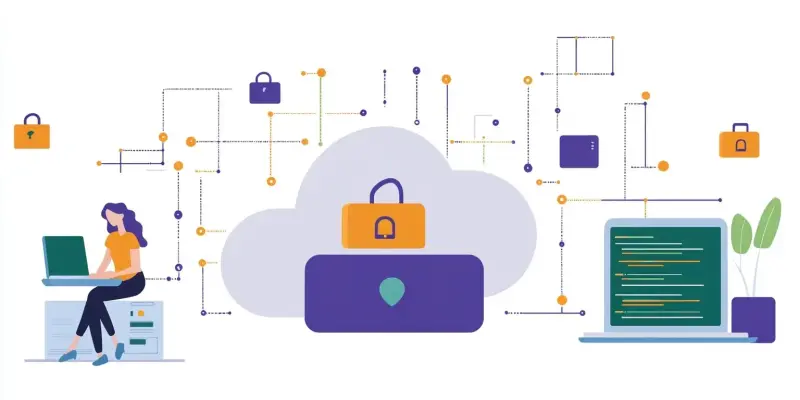In the rapidly evolving landscape of cybersecurity, administrators of Microsoft Exchange Server face a pressing decision. Recently, Microsoft issued a stern warning regarding the deprecation of an older Office Configuration Service (OCS) certificate, a development which significantly impacts the automated downloading of Exchange Server mitigations. This advisory is especially vital for those operating Exchange versions that predate March 2023, as these systems will cease to receive the latest security updates. The clear mandate is: to fully protect your email infrastructure, transitioning to cloud-based solutions like Microsoft 365 is no longer optional but an immediate necessity.
The Immediate Need for Action
David Shipley, at the helm of Canadian-based security awareness training provider Beauceron Security, stresses the urgency for organizations to update their Exchange servers without delay. According to Shipley, continuing to use an on-premises Exchange Server in 2025 is ill-advised given the ever-evolving nature of security threats. Organizations that neglect to patch their systems to meet current standards are essentially paving the way for cybersecurity disasters.
Concurring with this perspective is Andrew Grotto from Stanford University, who describes Microsoft’s recent advisory as “alarming.” Grotto highlights the difficulty many organizations encounter with on-premises Exchange, a system often described as “sticky” due to its persistent grip. This reluctance or difficulty in transitioning away from legacy systems exacerbates the issue. Additionally, the financial burdens linked with upgrading both software and hardware further complicate the transition, underscoring the urgency of moving to the cloud.
Historical Vulnerabilities and Risks
The necessity of cloud-based solutions is further underscored by the litany of vulnerabilities historically faced by Exchange servers. Key incidents, such as the ProxyLogon exploited by the Hafnium group and the ProxyShell vulnerabilities, vividly illustrate the dangers associated with running outdated software. These compromises have led to major disruptions, thereby emphasizing the critical need for always-updated solutions like Microsoft 365.
The Exchange Emergency Mitigation Service (EEMS), which was introduced in September 2021, serves an essential role by providing temporary safeguards pending the availability of official patches. While EEMS can be a useful stopgap, relying solely on such interim measures is not sustainable. Persistent and evolving cyber threats necessitate a more robust and permanent solution, which is where cloud-based services come into play.
Expert Consensus on Cloud Transition
A broad consensus among experts bolsters the argument for moving to cloud-based email solutions. Roger Cressey, partner at Liberty Group Ventures, and Johannes Ullrich, dean of research at the SANS Institute, strongly advocate for this transition. Cressey and Ullrich insist that on-premises Exchange should now be seen as a legacy product, one that is becoming increasingly challenging to support given the dwindling assistance from Microsoft alongside rising security vulnerabilities.
Both Cressey and Shipley agree that enhanced security is a compelling reason for this shift. This view is echoed by numerous security professionals who champion cloud adoption as not only a strategic move but also a security-enhanced approach. Cloud solutions offer the advantage of receiving automatic and immediate fixes directly from Microsoft, thereby mitigating the risks posed by unpatched or outdated on-premises servers.
Overcoming Financial and Logistical Challenges
Despite the clear benefits, the path to cloud transition is fraught with challenges, particularly financial constraints and logistical hurdles. These obstacles often dissuade organizations from pursuing this necessary shift. However, when weighed against the potential costs of security breaches and inefficiencies, the long-term advantages of enhanced security, efficient patch management, and alignment with modern IT practices become abundantly clear.
Organizations must acknowledge the importance of overcoming these challenges. By embracing cloud technologies, they ensure a more resilient and secure email infrastructure. The recommendation for administrators is to heed Microsoft’s warnings, fully grasp the ramifications of outdated infrastructure, and harness cloud technologies for a more secure and future-proofed email environment.
The Path Forward
In the swiftly changing world of cybersecurity, administrators managing Microsoft Exchange Server are confronted with a critical decision. Microsoft recently issued a stern alert about the deprecation of an older Office Configuration Service (OCS) certificate, a change that profoundly affects the automated downloading of Exchange Server mitigations. This warning is crucial for those running Exchange versions released before March 2023, as these outdated systems will no longer receive the latest security updates necessary to protect against new threats. The message is unequivocal: if you want to ensure the full protection of your email infrastructure, moving to cloud-based solutions like Microsoft 365 is no longer just an option but an urgent requirement. The ongoing reliability and security of your email services depend on this transition. By adopting Microsoft 365, organizations can benefit from continuous updates and robust security features that on-premises solutions struggle to match. Therefore, to safeguard sensitive information and stay ahead in cybersecurity, the shift to the cloud must be prioritized without delay.

